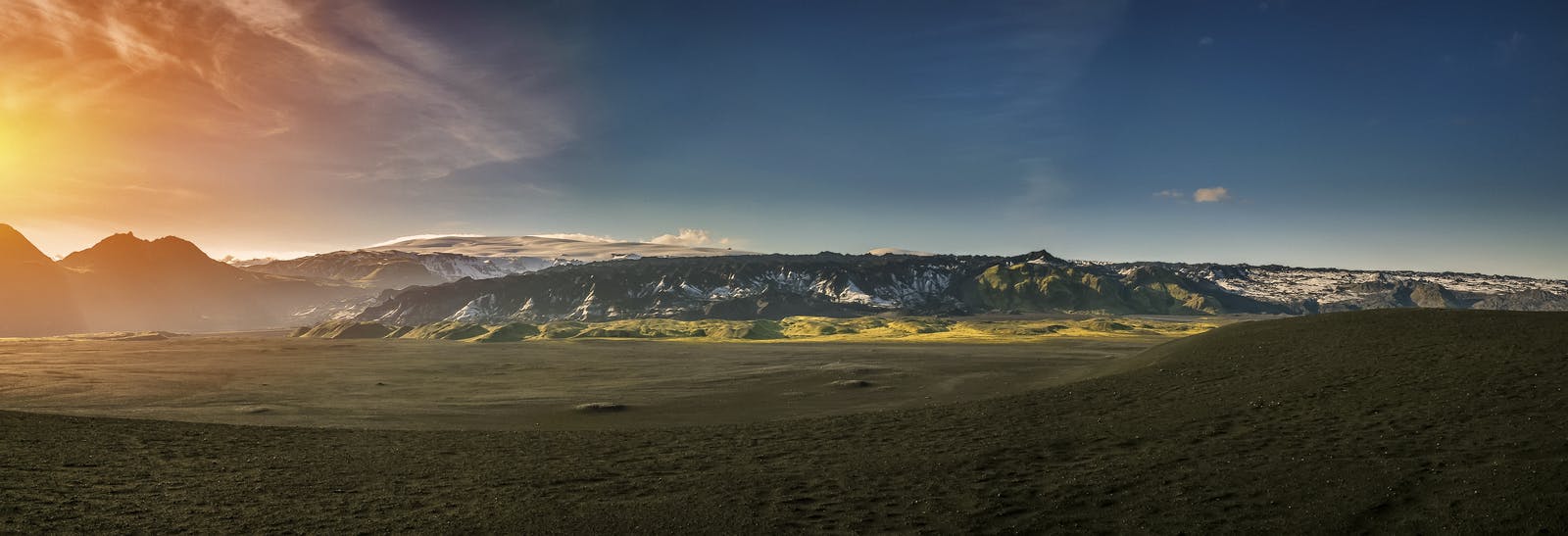
Guide to Mýrdalsjökull
Mýrdalsjökull is one of Iceland’s largest glaciers, covering an area of about 529 square kilometres (2019). It’s situated in the southern part of the country and covers the Katla volcano. This glacier holds a certain mystique due to its combination of serene beauty and underlying volcanic activity.
The ice conceals numerous outlet glaciers and crevasses, making it both stunning and hazardous. The landscape around Mýrdalsjökull is characterised by black sand plains, glacial rivers, stunning ice formations and cultivated land, creating a starkly beautiful contrast against the surrounding terrain.
What Does the Landscape Look Like Around Mýrdalsjökull?
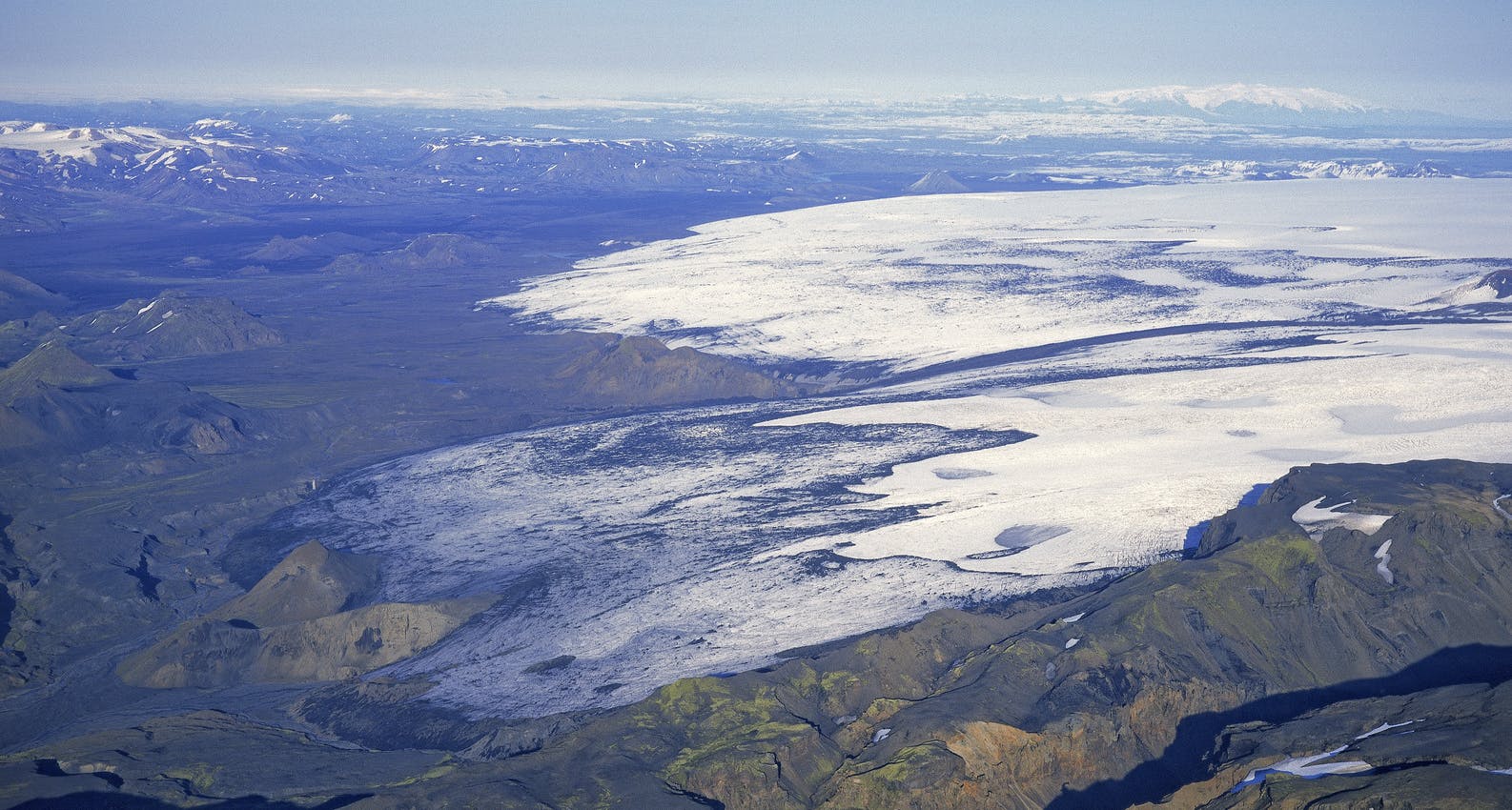
The landscape around Mýrdalsjökull is quite diverse, with towering mountains and vast valleys surrounding the glacier. The ice cap itself can appear as a dazzling white expanse against the stark contrast of the dark volcanic rock and rugged terrain beneath it.
What Does Mýrdalsjökull Look Like?
During different seasons, the appearance of Mýrdalsjökull can vary. The glacier is covered in snow and ice in winter, presenting a pristine sight. In summer months, parts of the ice might melt, revealing the underlying crevasses, black stripes of volcanic ash, and formations, creating a diverse and dynamic landscape.
Is There a Volcanic Connection to Mýrdalsjökull?
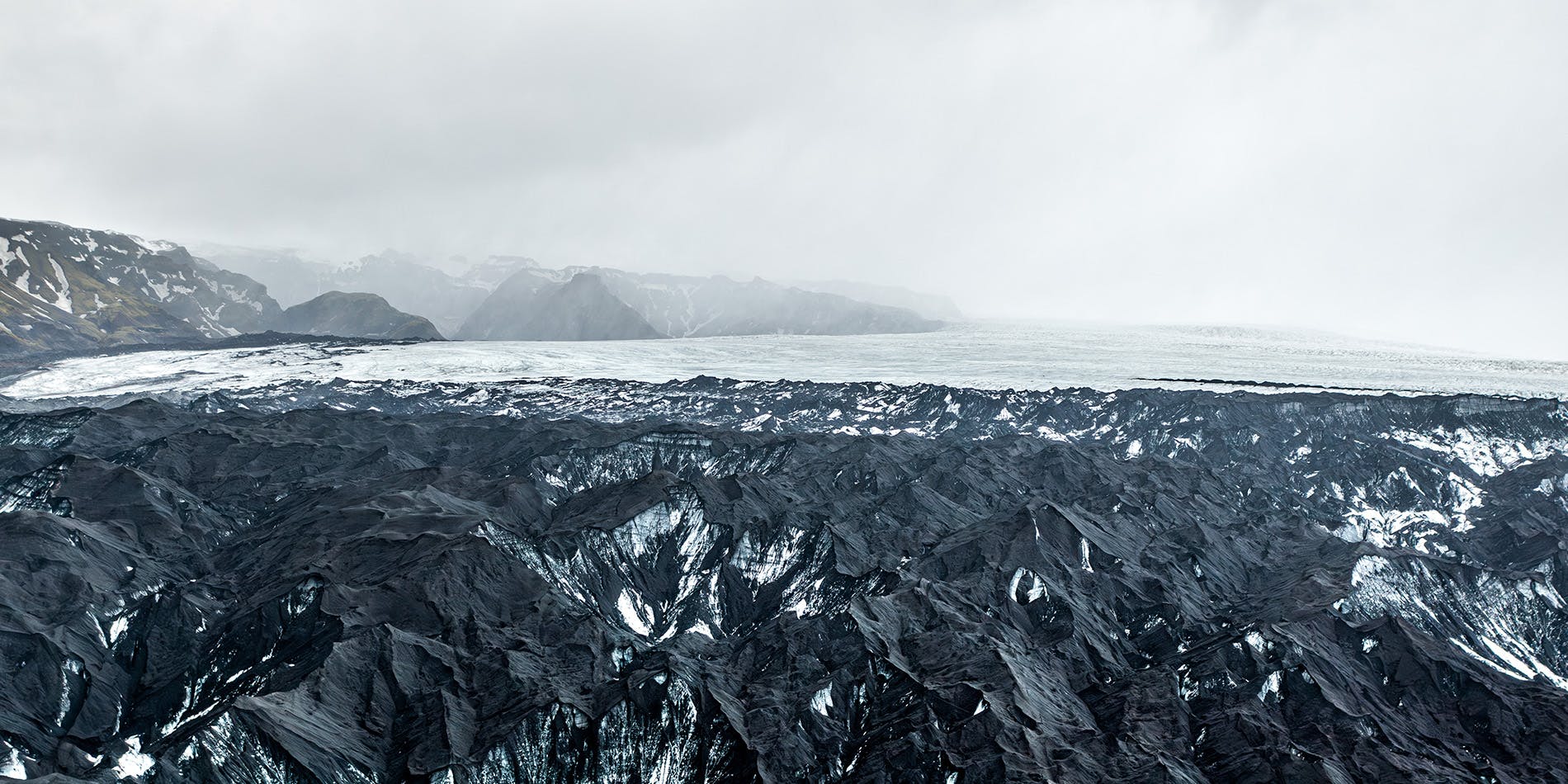
The ice cap atop Mýrdalsjökull hides a powerful and active volcano called Katla, which is known for its potential to cause significant eruptions. The volcanic activity beneath the glacier makes it a topic of scientific interest and concern. Katla, the volcano beneath Mýrdalsjökull, has historically erupted on average every 50-100 years. The last major eruption occurred in 1918, and there have been signs of increased activity in recent years, keeping researchers vigilant about potential future eruptions and their potential impact on the surrounding areas.
When has Katla erupted throughout history?
There have been 20 documented eruptions of Katla between the years 930 and 1918 and a few might be missing. These eruptions have happened every 20 to 90 years, and scientists say that Katla is long overdue for an eruption. Small eruptions that didn’t break the ice occurred in 1955, 1999, and 2011. More than 100 years have lasted since Katla’s last major eruption.
Can I See Ice Caves Near Mýrdalsjökull?
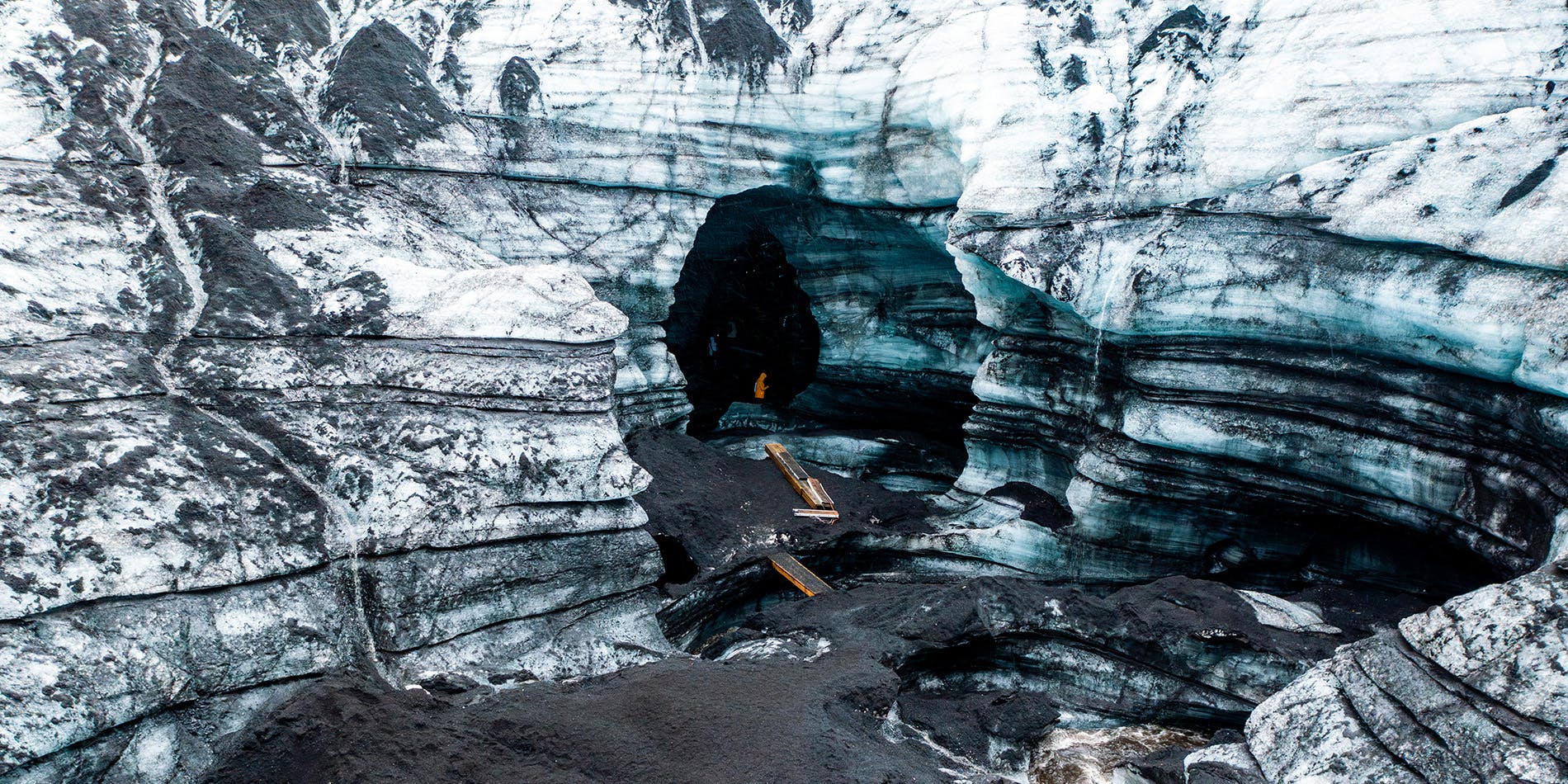
Katla’s ice cave can be visited year-round on guided tours to the Mýrdalsjökull and Kötlujökull glaciers. The inside of the Katla ice cave is blue and black; the black is ash from volcanic eruptions. The ice cave is less than 1 hour from the village of Vík and is a popular attraction for tourists looking for an adventurous outdoor activity. Experienced glacier guides lead the tours.
Is it Safe to Explore Mýrdalsjökull on Your Own?
If you want to explore Mýrdalsjökull, you must visit with an experienced glacier guide or as part of a guided tour. Guides are trained to navigate the glacier safely, have the necessary equipment, and are knowledgeable about the terrain and potential risks. They also keep an eye on weather forecasts and volcanic activity, ensuring a safer experience.
Where Can I Learn About Glaciers in Reykjavík?
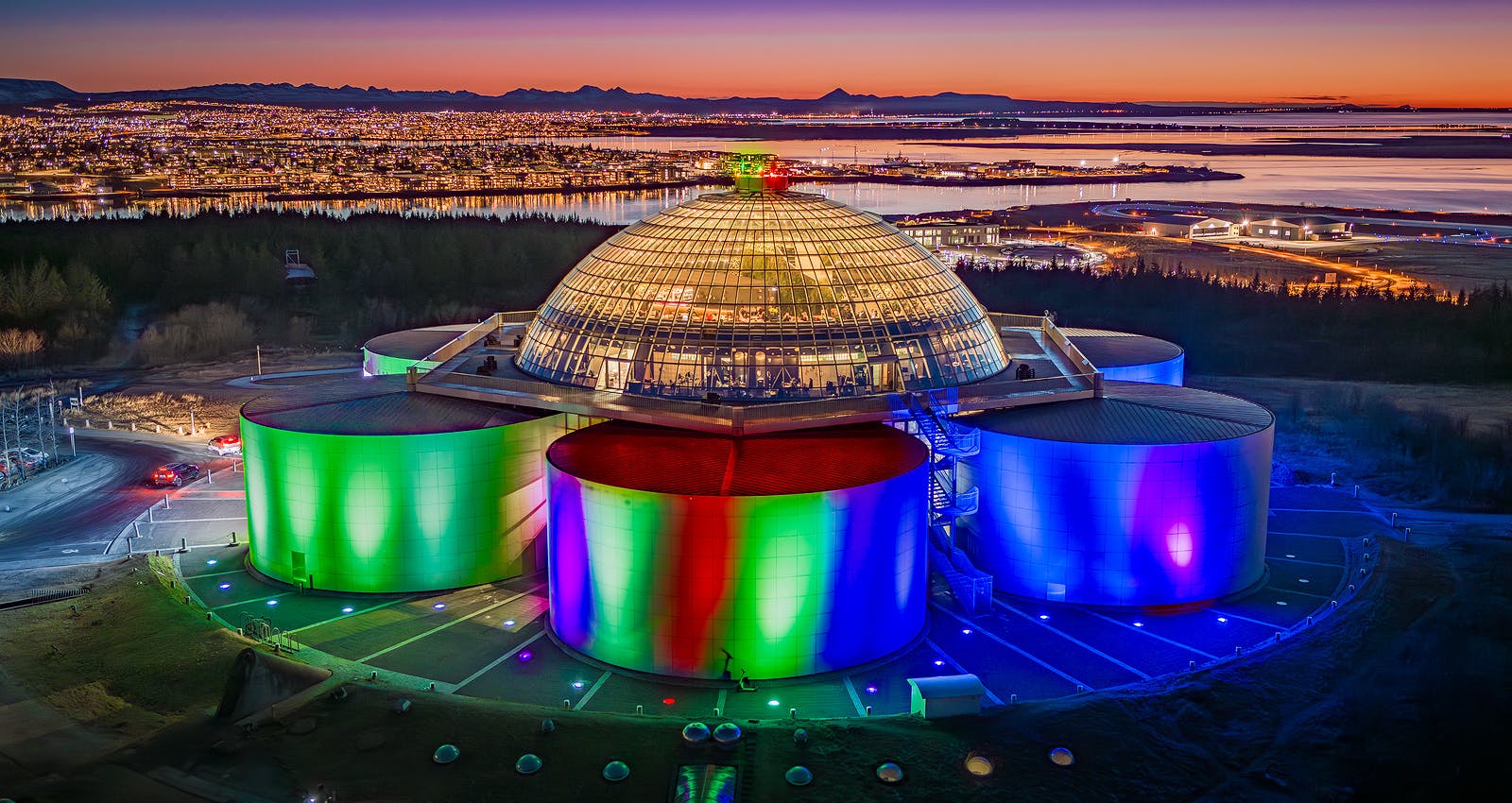
Perlan’s Wonders of Iceland exhibition features an ice cave that is 100 metres long and made from more than 350 tonnes of snow from Icelandic mountains. Ice caves are a natural phenomenon that takes shape in the deep winter months within glaciers. Meltwater streams carve these fantastic caves, and at Perlan, guests can see a real ice cave in a safe and secure environment. A visit to an ice cave is a magical experience that no one who comes to Iceland should miss, and Perlan offers year-round travellers a chance to get a sense of this unique natural phenomenon.
At Perlan, guests can explore Iceland’s’ natural wonders through a series of exhibits and immersive presentations, including ice caves and glaciers, as well as northern lights and volcanoes.
FAQ
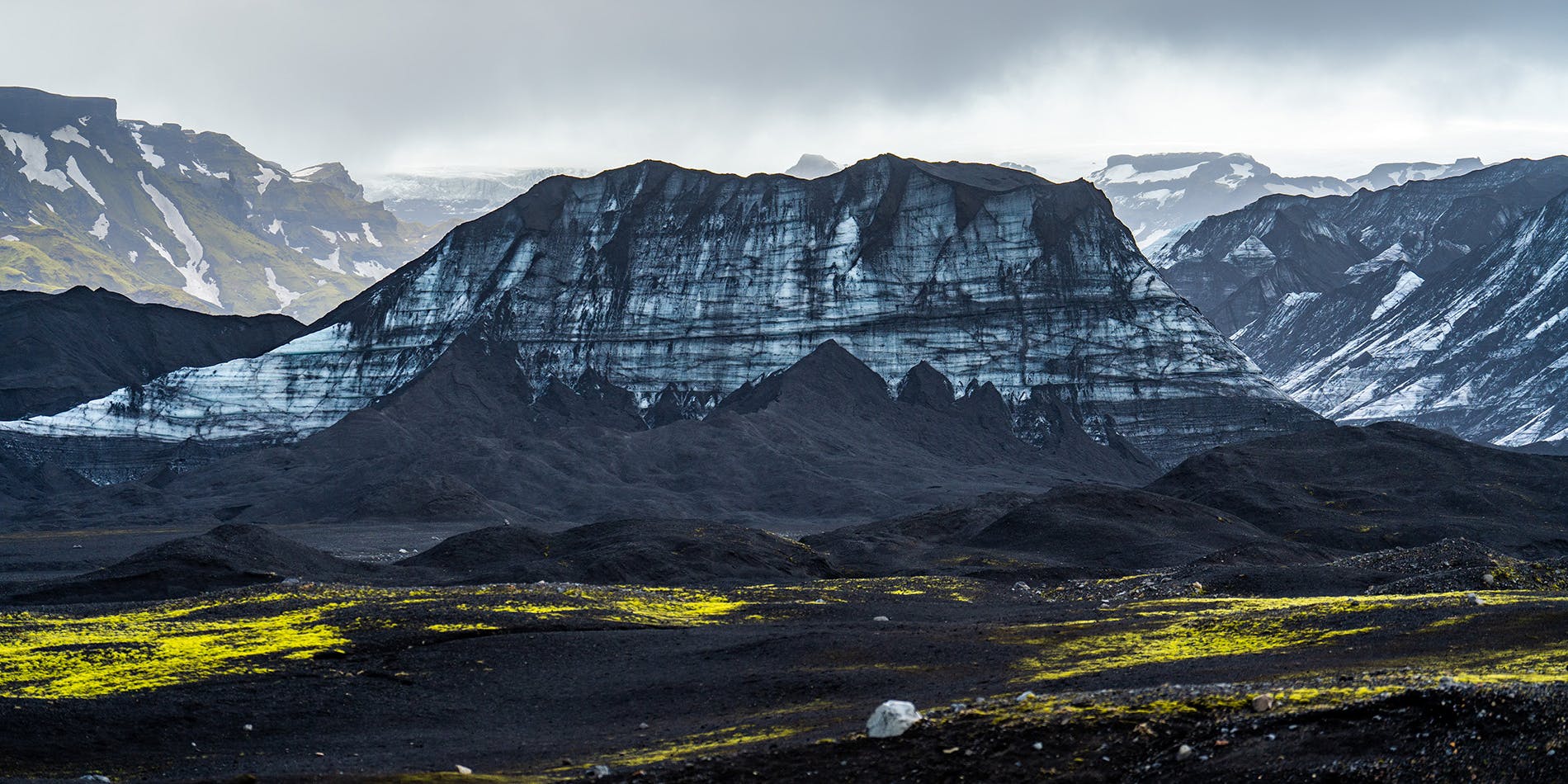
What attractions are near Mýrdalsjökull?
Mýrdalsjökull ice-cap covers Katla. The glacier is visible when touring parts of the South Coast of Iceland. Some nearby attractions include the glaciers Eyjafjallajökull and Sólheimajökull; the waterfalls Skógafoss, Seljalandsfoss, and Gljúfrabúi; the black sand beach of Reynisfjara and the village of Vík.
Is it safe to visit Mýrdalsjökull?
Safety should always be a priority in such environments. It’s essential to respect the power of nature and take appropriate precautions when exploring remote and potentially hazardous areas like Mýrdalsjökull. Always dress for the conditions and visit with a trained glacier guide.
Popular articles

Reykjanes Volcanoes Overview
Enjoy a complete overview of the Reykjanes Volcanoes from 2021-2024. Learn about its geology, recent activity, and visitor tips for a safe, memorable experience.

Reykjanes Peninsula Volcanoes: Sundhnúksgígar Eruptions
The anticipated volcano has erupted in the Reykjanes Peninsula, the site is being called Sundhnúkagígar. See the historic insights on the seismic activity and volcanic eruptions.

Earthquakes in Iceland
Earthquakes in Iceland are a fact of life. Each year, hundreds of small tremors shake the earth, a reminder of the country’s position on a tectonic plate boundary.

Volcano Museums and Exhibitions in Iceland
If you don't manage to visit an actively erupting volcano in Iceland - Experience its force at one of these excellent volcano museums and exhibitions in Iceland.

Top 10 Places To See the Northern Lights in Iceland
You can see the northern lights across the country, but some spots are more suitable than others. Find the best place to see the northern lights in Iceland.

Ice Caves From Reykjavik
Travel beyond the capital for a closer look at an ice cave under one of Iceland’s glaciers. If you can’t spare the time, experience Perlan’s ice cave in Reykjavik.